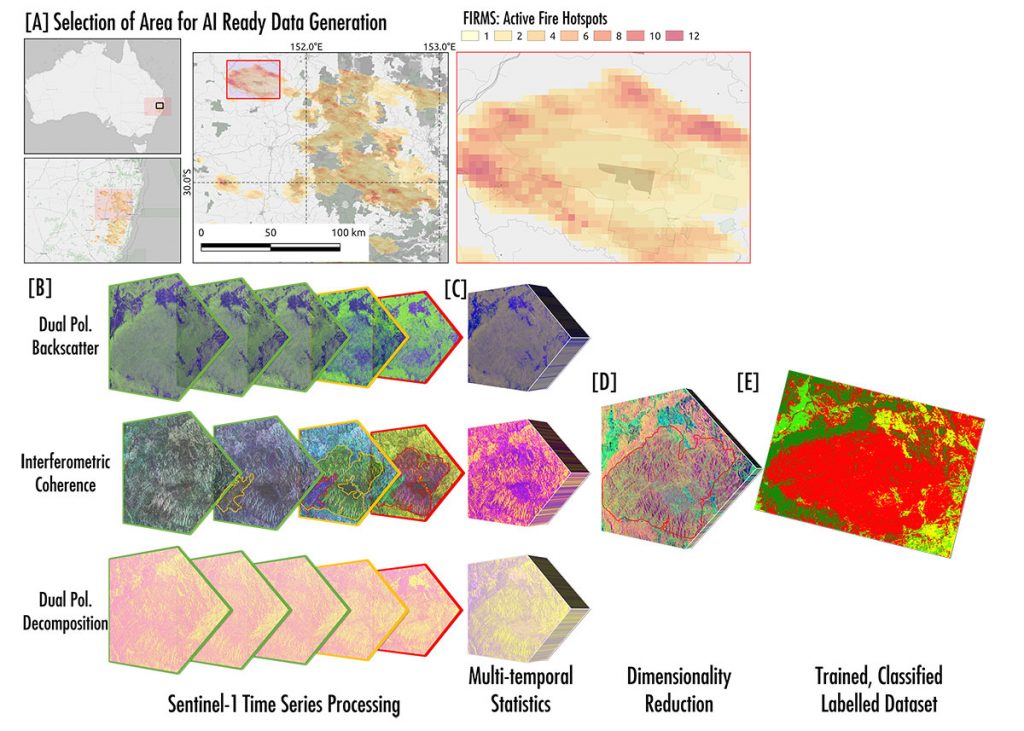
Forest fires are increasing in frequency and severity on a global scale, causing serious human, environmental and economic damage. Information about burn scars and vegetation loss can be obscured from optical and infrared sensors by smoke, haze and clouds in the aftermath of fires. SAR sensors have the ability to image the surface through clouds, smoke and haze, and can provide information about structural changes in vegetation as well as changes in surface water content.
This is particularly useful in areas of persistent cloud cover, where a clear view from medium resolution optical images can take months to get after an incident and vegetation regrowth may make detection difficult. As well as the necessity to monitor fire outbreaks and predict spread in real time to coordinate fire-fighting efforts, measuring the contribution of emissions from fire events to atmospheric carbon dioxide is vital for climate modelling. A burned area labelled dataset from Copernicus Sentinel-1 constitutes a vital step towards the use of Deep Learning methods for rapid reporting of medium-to-high-resolution burned areas in all weather conditions..

The aim of this research is to develop a novel method for the generation of burned area measurements, using rapidly generated AI-ready data, maximising the information available from a time series of Sentinel-1 SAR SLC products. This will generate labelled data from archive S-1 SLC data. The selection of training areas will be automated and based on global stratified sampling by fire incidence (using high confidence active fire hotspots from Sentinel-3 and MODIS), land cover type (using ESA Land Cover CCI or similar datasets), season, and Sentinel-1 availability. Preprocessing of S-1 SLC images will be fully automated and cloud based, hosted on the Creodias platform.
Instruments on Copernicus satellites are used to produce images of smoke, flames and burn scars (Sentinel-2), monitor fire hotspots (Sentinel-3) and provide analysis of air pollution, such as carbon monoxide (Sentinel-5P). The C-band SAR sensor from the Sentinel-1 satellites may provide unique insight into the severity of burns as well as complementing the other Copernicus mission datasets. Initial priority is being given to generation of Analysis Ready Data (ARD) for gathering labelled training data from Sentinel-1 archives. The ARD generation aims to address the limitations of both datasets (e.g. flattening and masking geometric distortions in SAR, gap filling of clouds and shadow in optical), and will build on and contribute to existing efforts externally and within Φ-lab.
Share